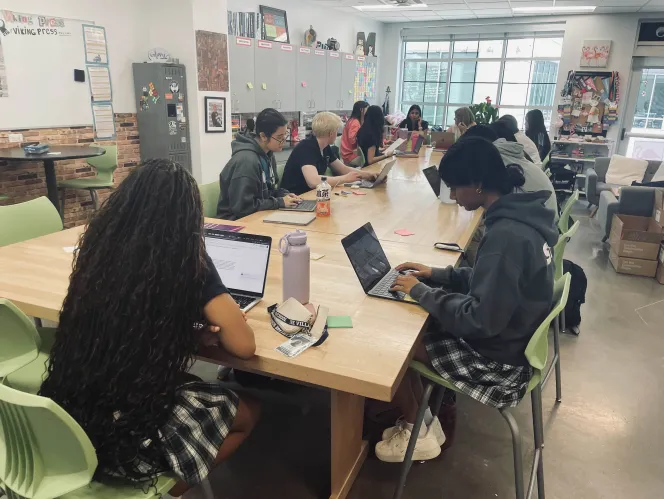At The Village School, a number of classes are offered, meant to highlight the creativity and independence of students; including theatre, dance, and journalism. Additionally, a number of clubs offer the same creative freedom and autonomy, like Student Government, Honor Society Clubs, and countless student-operated clubs. All of these are student-led, meaning the classroom environment is notably more autonomous than other typical classes in the school curriculum. Having these classes with the “same” general ideas leads to striking differences in learning style. What truly draws the difference between the two is the differences in productivity. What are these classrooms doing differently to be more or less effective?
“I base my classes around having three big deadlines that students need to follow, but I give them these guidelines, and the rest they do on their own.” said Eric Polley. Classes like the International Baccalaureate Dance are structured around giving students complete control over their environment while still having a centered structure with regulations and expectations. “I make sure my deadlines are about a week before the actual IB deadlines so that I make sure these students have time in case anything goes wrong.” This gives these students the freedom while still having a safety net in case they need more direction. While it could be a dilemma over how much “freedom” and “independence” it’s taking away to have these structures, it seems to be the best medium for classes like this to have.
When you compare environments like IB dance to ones like Student Government or Honor Societies, the first thing you’ll notice is the extension of the freedom in these versus the other core classes that rely almost solely on set deadlines and instructions for every class and assignment. However, when you look a bit deeper into the productivity and other results similar to that, you can see the very obvious drop in results. “Student government is very centered around student motivation and the purposes in their work; without that motivation, kids don’t have a very high productivity.” said Andrea Sealy, the student government advisory as well as entrepreneurship teacher. Specifically with student government, we can see the difference in the extra freedom versus having these rules and regulations. In past years, the Student Government had extreme trouble with productivity because of their lack of structure regarding the presidents. However, in this current year, Andrea Sealy has taken initiative and added a structure to the rules. It is still allowed for the President and VP to create the build of the class and the team; however, Andrea Sealy has recently done things like make it a requirement to read a book on leadership to teach them the ropes, as well as clear a path to give direction to create better efficiency in getting proposals and events through all admin and approved. This same statistic is being shown in the other examples, like honor societies and student-run clubs, where there is barely any structure, which leads to nothing getting done.
While this seems to be enough evidence to prove the point, we can also look at a broader perspective. If you look at the general idea of public versus private schools, it can be another example of this variation. Typically because of the difference in the leadership and structure of these two types of schools, there will be a difference in academics, leading to a difference in leisure. Public schools have a much more relaxed environment where many more kids will end up skipping classes or not submitting work, while private schools have a more advanced and strict environment, which brings more consequences to those who do these things. While there are many other reasons as to why these things happen, making this debate on school a much more controversial topic, it just gives another insight and example of how these rules can change results for the better.
Overall, comparing the limited independence with structure and the complete independence education, you can tell how we should continue to try and implement more of a direction in the less structured environments, not for the purpose of limiting students freedom but for the purpose of increasing productivity and impact.








